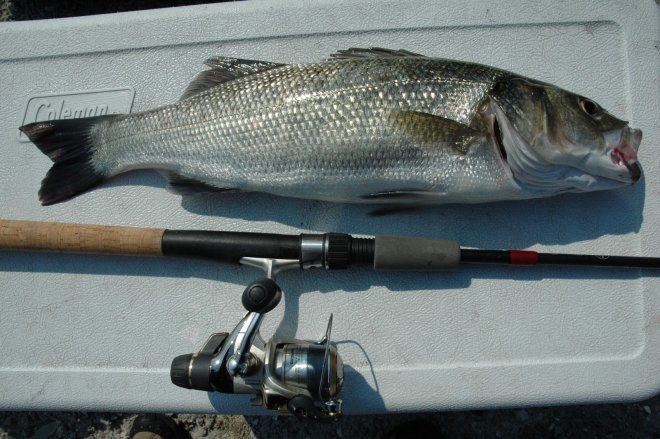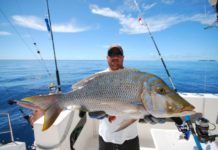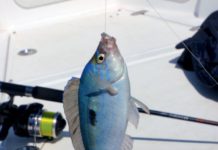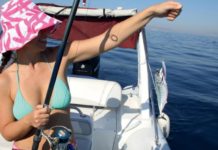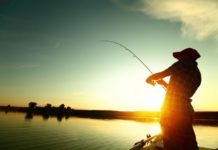- Scientific name: Dicentrarchus labrax
- Higher classification category: Dikentrarchos
The bass is the family of Moronidon fish, found in the Mediterranean and the coasts of the North Atlantic.
Many people believe that they can go fishing because they have no idea about this highly popular are otherwise hobby.
And yet!
Fishing is a relaxing pleasant pastime with which anyone can grapple, provided they respect the environmental requirements relating to the protection of the population prostaftefomenon species.
If the learning process of fishing is half… nobility, the other half is the bream grilled…
Let us not hurry, though, and let’s take things in turn. Preconditions some simple steps to identify our target, to properly equip and target hit it! What are these;
Find it!
To go fishing must first know where to find the fish you want. Yes, the fish go where water, enough food, oxygen and cover. But not all live fish in the same waters. There are certain conditions that can affect their viability, such as salt, oxygen, kind and amount of food, water temperature, coverage areas (to hide), breeding areas.
Thus, for example, the smelt is afropsaro so angled and netted but located in deeper water, and when normally asleep polishes. Mullet, from the first fish amateurs, located in harbors and beaches and often licks the bait and leaves.
The Weevers are in deeper waters abound in Greek seas. The bream “move” in sandy bottoms, and white seabream bream and rocky bottoms. Bass again we find everywhere.
Rode the pole…
Our first step in learning to fish for is to procure the necessary equipment. There are many fishing tackle which are divided into categories according to their use. For our first steps, however, you do not have to tangle with complex and potentially dangerous tools.
The most important of all is the pole. Our reed can be made of reed, bamboo or a straight tree branch. No need to use tsikriki (like bobbin) with the pole. Cut a piece of fishing line length as the pole, tie the line to the edge and the edge of the line and tie the hook. Above the hook tie a plumb. By Bob can easily swing the line and keep the bait (bread and butter, worms, barnacle) below the water surface.
We can also use a cork and a tie in the line height desired, depending on the depth you want to reach. With a simple rod and line can get fish found in shallow waters of a bank.
Somewhat more ‘professional’ course is the reeds with tsikriki (spool), which help us to shake the line even further and thus aim for fish in deeper waters. There are different types of such poles, depending on the capabilities of tsikriki.
Their main categories are: reel (for lighter reeds), trolling (usually mechanical, for fishing in very deep), fishing pole (on cliffs) and flyfishing (easier to throw the line, but quite difficult to use by novices).
There are however limited to these features. The fishing rods can be adjusted according to their length, weight, type of fish which are designed to catch, whether handmade or industrial, etc. Important in each case is properly in the weighing, so as not to weigh very hand fisherman.
Hold it!
After we got our pole, we can now rush to the coast and to aim for the best fish. We will succeed in three simple steps:
1. Doloste the. This means: We fish sting in bait and therefore the hook. A key element is the hook is very sharp. We fly, then, the line of force so as to penetrate instantaneously into the water. We try not to make this move several times because they’re more likely and bait fish will lose and will not get down.
2. Give your battle against fish. The only sure thing is that once you get down to the fish, it will do everything possible to escape us. It jumps, it is shaken, he will try to return to the water. Each type of fish trying to escape in his own way. Fish in shallow water, for example, are much more furious when hooked from ocean fish. There… Psara, however. quickly wrap the line by lowering the pole until leveled and aimed at fish. After stopping to wrap and slowly lift the rod until it gets almost but not teleios- vertical slope. We repeat the same movements until landing the fish ashore. Caution: Under no circumstances should loosen the line.
3. Ground! The fish can be landed either manually or with specific tools, such as a net. A common way also is to pull the fish ashore. The direct, ie, in very shallow waters having it turned on one side. While water is dwindling quickly catch the fish and remove it out. The sequel is known to all: The clean and well… prepare our barbecue!
With these few simple tips, and many more detailed in the relevant links, we encourage you to get involved with one of the most favorite activities of summer and good luck!

 Ελληνικά
Ελληνικά
